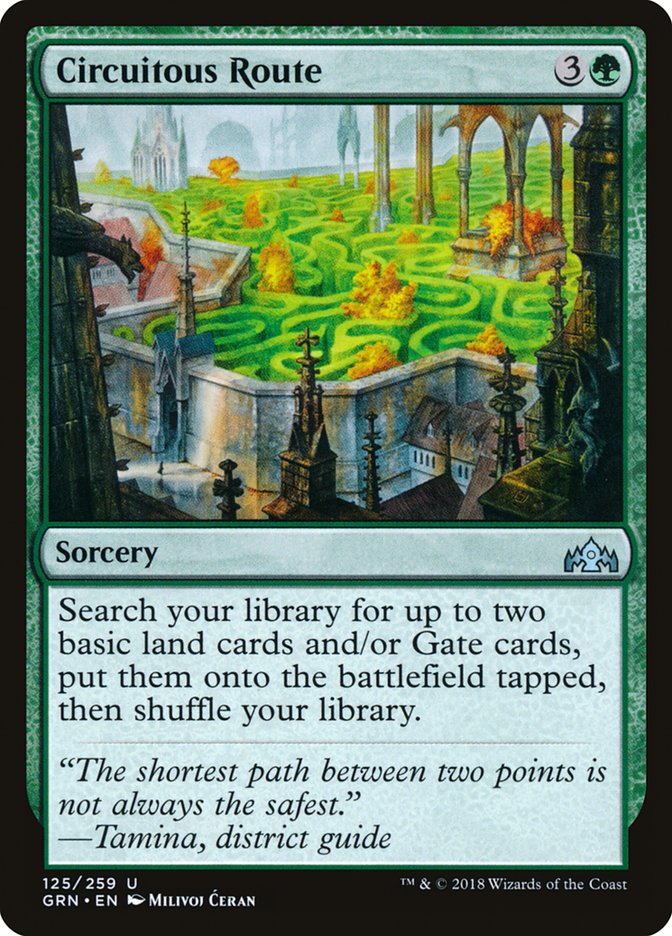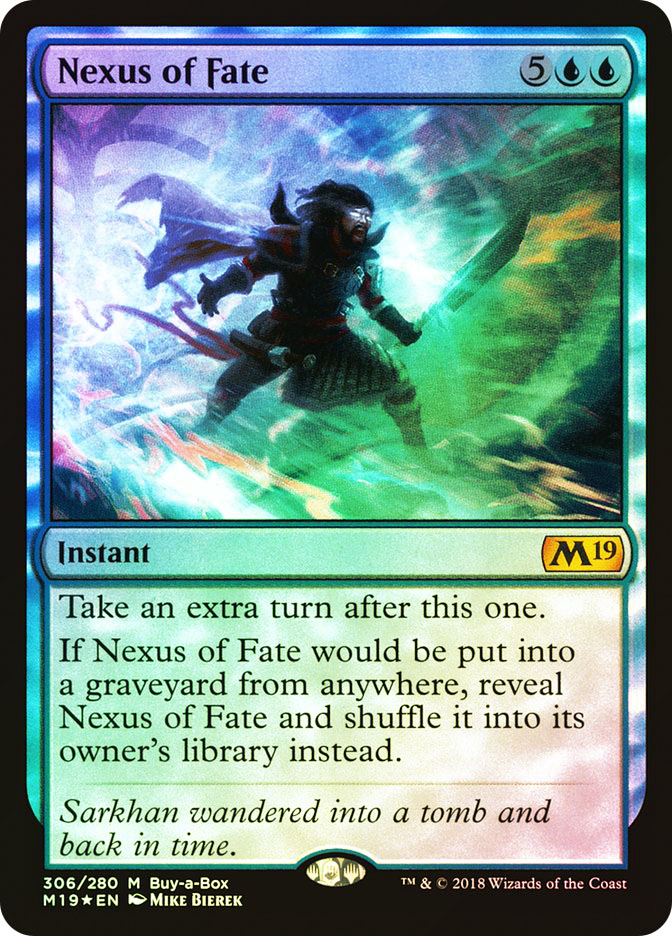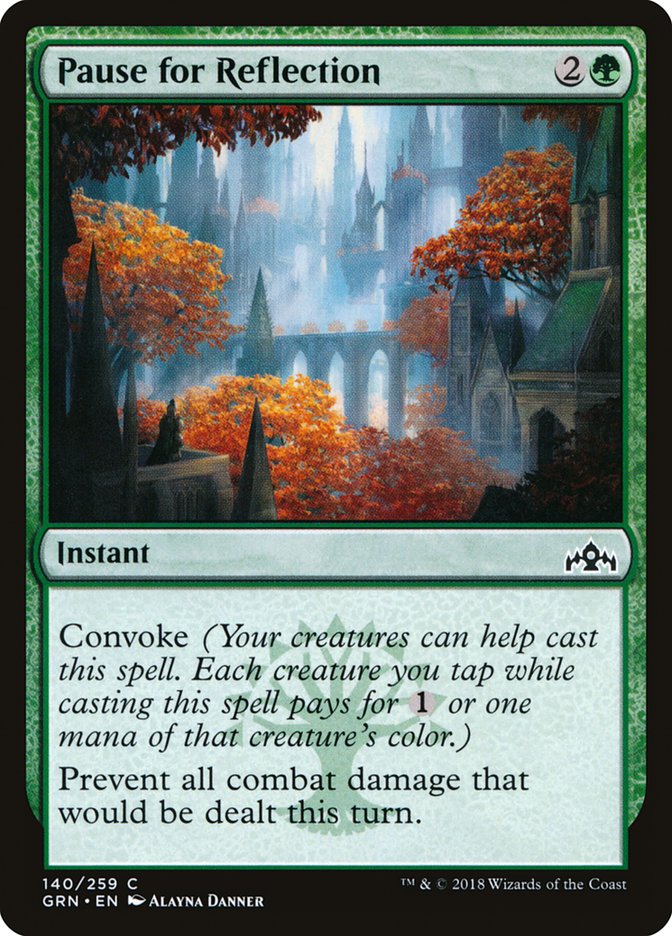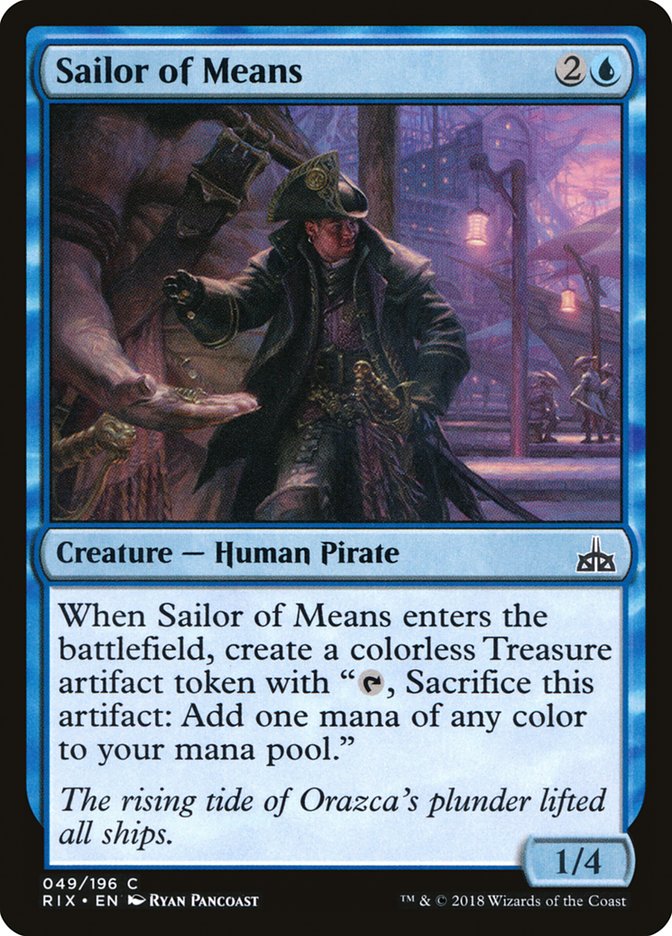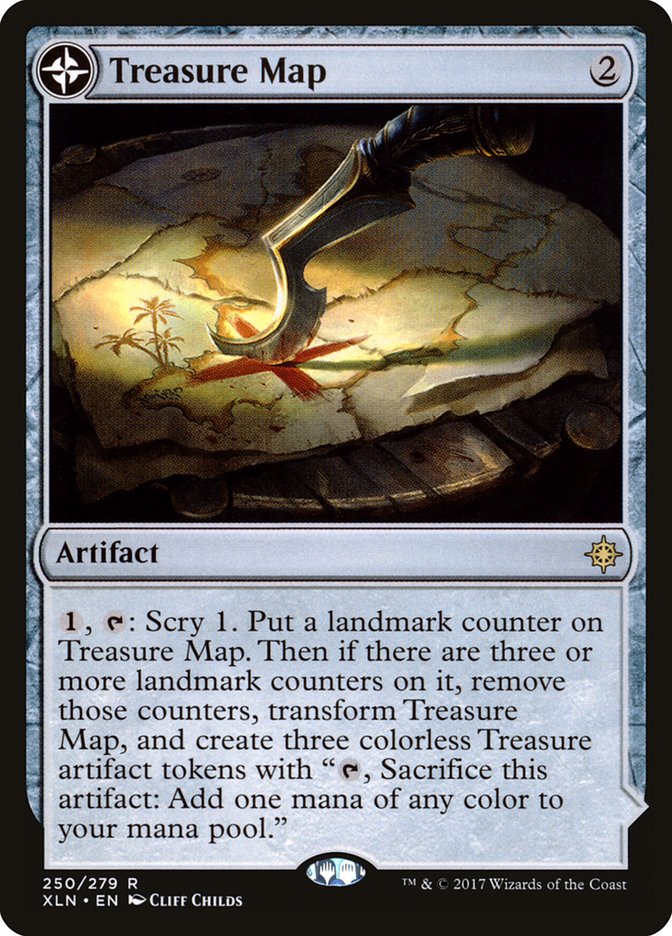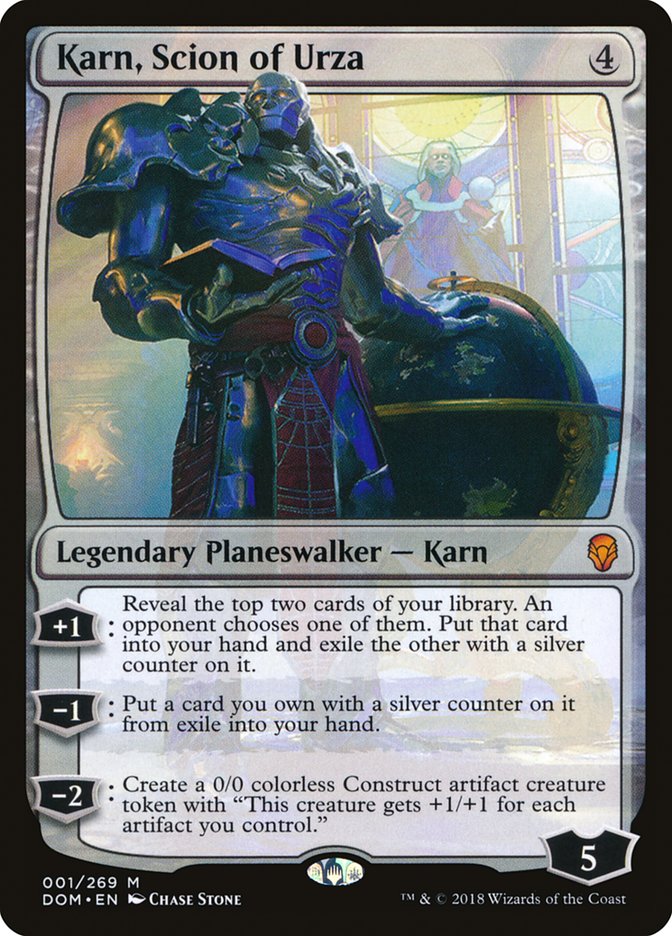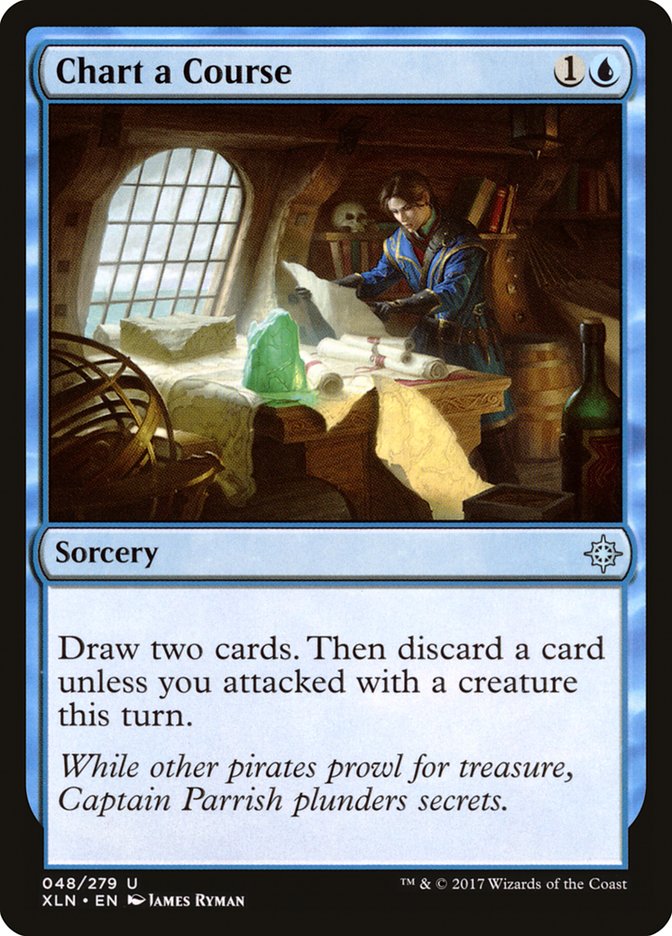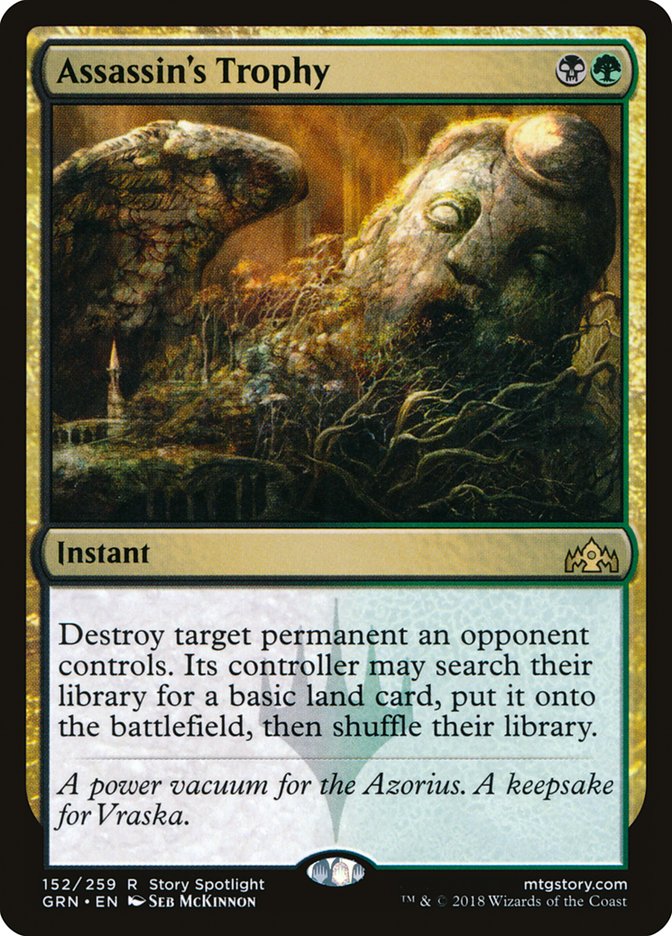Aggro is dead.
Long live aggro.
It’s rotation time and it’s time to face the music: low to the ground aggro
decks don’t look so good. Without the shocklands from Ravnica Allegiance, it’s hard to have enough untapped lands for
Goblin Chainwhirler and company; and the white decks are looking to lean
into cards like History of Benalia that encourage winning in the mid-game.
What does this mean? It means that we’re going to see a Standard closer to
the last couple of Ravnica-era formats. Trumping the opponent’s
cards, either through power or value, is going to be the name of the game.
Looking back to Return to Ravnica/Innistrad Standard, we can see
being achieved a few different ways:
Creatures (22)
- 2 Arbor Elf
- 4 Avacyn's Pilgrim
- 3 Restoration Angel
- 2 Craterhoof Behemoth
- 4 Thragtusk
- 3 Angel of Serenity
- 2 Centaur Healer
- 2 Deathrite Shaman
Lands (23)
Spells (15)

Abzan Reanimator used the combination of Thragtusk and Restoration Angel to
clog up the battlefield while Angel of Serenity and Craterhoof Behemoth
closed the game by virtue of being a colossal flying threat or making all
of one’s creatures lethal power-slash-lethal toughness creatures.
Creatures (14)
Lands (25)
Spells (21)

Jeskai Flash was a fairly boring control deck by today’s standards, but had
a big thing going for it:
As long as the game progressed forever and the Jeskai pilot continued to
hit land drops, Sphinx’s Revelation would allow its caster to out-resource
anybody.
There were other decks at the time, but the most resilient archetypes of
the format tended to revolve around “Stall with Thragtusk until you get
around to killing them,” and “Trade resources until you can cast enough
Sphinx’s Revelations that the opponent doesn’t have cards to play with.”
We can use similar plans while building decks for Guilds of Ravnica Standard. Going over the top isn’t exactly hard
to do with the tools that Wizards of the Coast has given to us. The key to
utilizing the aforementioned tools is finding a cohesive shell for them.
Ramping
The most straightforward way of going over the top is simply playing bigger
spells and casting them as quickly as possible. It isn’t coincidental the
best midrange creature of all time ended up being a mana accelerant with
upside:
The Jeskai-flavored Sphinx’s Revelation decks didn’t worry about ramping
due to the fact that their gameplan revolved around answering everything
the opponent did while playing one land at a time. There isn’t a colossal
difference between playing a land and resolving a Rampant Growth if all of
one’s spells cost a similar quantity of mana.
That wasn’t the case with all variations:
Creatures (8)
Lands (26)
Spells (26)

In a deck like this, mana comes at a premium, and just hitting one’s land
drops every turn isn’t quite going to be good enough. When aggro is weaker,
it’s easier to justify taking a turn off for the sake of putting extra mana
onto the table. It becomes an even bigger deal when the decks in question
are interested in proactively casting medium to large spells.
Guilds of Ravnica
was kind enough to bless us with a new take on Explosive Vegetation, that
even allows its caster to get dual lands. This type of ramp effect also
being a form of card advantage means it’s possible to get away with playing
spells that are more mana-intensive, when it otherwise may constrain
resources too far to expect to find the requisite quantities of mana,
interaction, ramp, and bombs each game.
Creatures (17)
- 4 Carnage Tyrant
- 1 Gishath, Sun's Avatar
- 3 Wakening Sun's Avatar
- 4 Rekindling Phoenix
- 4 Thrashing Brontodon
- 1 Zacama, Primal Calamity
Lands (23)
Spells (20)

This is the fairly textbook for a beginning-of-the-format concoction that’s
just a pile of powerful cards and the removal to get you to them. Tank up
with Rekindling Phoenix and removal, finish with creatures that the
opponent can’t outclass. Easy peasy.
This deck is going to lean pretty hard into its two-mana ramp spells, with
Thrashing Brontodon being the only three-drop in the maindeck,its primary
purpose being a serviceable early-game play that also fuels Thunderherd
Migration.
Another way to build a deck with a similar gameplan would be to lean into
Sarkhan, Fireblood, and changing the curve around a bit:
Creatures (15)
Planeswalkers (4)
Lands (25)
Spells (18)

It protecc
It attacc
But most important
It attacc
There’s a noted absence of haymaker-level removal spells in this deck when
comparing it to the previous Dinosaur deck. Rather than trying to generate
some million-mana reptile, this deck is more comfortable settling for
“everything kills you.”
All these creatures have some sort of value stapled to them, with most of
them having something that contributes to putting the opponent closer to
death. An ideal curve in this deck is going to look something like:
- Turn 2: interactive spell
- Turn 3: Sarkhan, Fireblood or Dragon’s Hoard
- Turn 4: begin casting dragons.
The luxury that both of the ramp spells in this deck have is that they can
keep the threats coming. Rather than just leaning into the mana advantage
generated from each card, they rely on the fact that each copy of Demanding
Dragon and Verix Bladewing is likely going to have a free copy of Lightning
Axe or Flame Rift attached to it.
Think of Sarkhan and Dragon’s Hoard as miniature Sphinx’s Revelations.
Sure, whatever value they’re generating can be one-for-oned for a while,
but the opponent can’t keep those exchanges up forever without ending up
massively behind over the course of a game.
Some decks are interested in leveraging mana advantages by circumventing
the rules of Magic. If the opponent never casts a spell again, does it
really matter how big your spells are?
Creatures (3)
Planeswalkers (7)
Lands (25)
Spells (25)

The running joke I had with friends was something to the effect of “If WotC
prints something that is a pseudo-replacement for Haze of Pollen, it’ll be
laughable how far ahead of everything else Bant Nexus is, relative to
everything else in the format.”
Then, it happened.
The two hardest to replace cards that were on their way out found
themselves reprinted and replaced in Core Set 2019 and Guilds of Ravnica.
All kidding aside, with some tuning, this deck is likely very
good. The other cards that rotated opened up a bit of space to experiment
in the deck, and I’m currently trying out the Treasure package.
Despite seeming unassuming at first, with Sailor of Means looking
particularly underwhelming at a glance, both of these cards synergize
spectacularly with cards that the deck is already playing in order to
accomplish its primary gameplan.
It isn’t really a secret that Bant Nexus is actually a Teferi, Hero of
Dominaria deck, not a Nexus of Fate deck. Nexus of Fate is simply the tool
that it uses to push Teferi to his limits. Sailor of Means performs the
same ramp-into-Teferi duties that Gift of Paradise does, but instead of
making the lands that Teferi untaps better, it serves to protect the
Planeswalker.
Treasure Map works both pre- and post-Teferi, serving as a source of card
filtering to do some of the work that Glimmer of Genius was doing
previously, while also being one of the best lands to untap possible after
it transforms. Teferi’s +1 to draw a card, then sac treasure to draw a
card, then untap it to do it again? Yes. Please. That’s ignoring the fact
that one of the downsides associated with Treasure Map is that it usually
requires an untap step to cast in the first piece of Treasure for a card,
and Teferi circumvents that draw back entirely.
Rather than being the obligatory kill condition of the previous Bant Nexus
deck, the density of incidental artifacts makes the Constructs produced by
Karn become even better, which means more than one would assume- and that’s
operating under the assumption that people know how good free power and
toughness is.
Casting a third-turn Sailor of Means into fourth-turn Karn makes it
unbelievably difficult for the opponent to get Karn off the battlefield
before his controller gets another activation out of him, whether he’s
rolled up or down the turn that he’s put onto the battlefield.
On the other side of things, flipping a Treasure Map on schedule is turn 5,
leaving four mana to use on anything one could want. Like a Planeswalker.
Or a 4/4 Construct machine. Or both.
A benefit Karn and his Constructs have, as well as Sailor of Means, is that
there’s a real benefit to playing cards that get better with creatures in
the deck. Chart a Course is a good card when it isn’t providing card
advantage and is unreal when it is. Pause for Reflection creates a sick
play pattern in which turn 3 Sailor of Means into turn 4
Karn-plus-Construct makes it possible to have zero-mana Fog effects.
Another big draw to Treasure Map that Jadine Klomparens brought up in
her article
this week is the fact that the back side of it is a mana-producing land. It
scrying to filter draws as well as producing up to four mana after it’s
transformed means that we can cheat a little bit on the mana. On top of
that, it’s another source of ramp that does something else in the deck
other than simply cramming twists on Rampant Growth into the deck.
Okay, I know what you’re thinking.
Sinking a bunch of mana into a single threat is a bad idea when there are
two-mana Vindicates running around. I’ve even felt my own skepticism
creeping up at times while writing this article. There are two pretty
simply points to consider that make this less scary than it has to be:
- Assassin’s Trophy is only good against anything, not everything.
-
Assassin’s Trophy has a drawback that’s exploitable by virtue of it
fueling the very cards that it is good against.
Both points are fairly easy to unpack and addressed in all of the above
lists.
Assassin’s Trophy is going to thrive against decks that only have a couple
of cards worth targeting. Synergy decks that lean on a single payoff card
are going to suffer, and playing a bunch of little enablers is going to
look kind of silly if they don’t function independently or make finding
more payoff cards easier. Decks that play a pile of good cards are going to
have the odds be a bit more in their favor against Trophy, as the opponent
can’t have a pile of Assassin’s Trophy in their deck, only a playset.
Decks that play powerful must-answer cards up the curve are going to
benefit from the ramp that Assassin’s Trophy provides. That’s to be
expected. Decks that ramp tend to be built with specific curves in mind,
frequently sporting specific holes in order to compensate for the jumps in
mana that their ramp spells and mana rocks create. Assassin’s Trophy plays
right into this plan, and these styles of decks are going to have a much
easier time combating the card than decks that aren’t utilizing the mana
provided by the removal spell.
All of this completely ignores the fact that there will be decks that don’t
include Assassin’s Trophy, and beating those decks will be worth the same
number of match points as the ones containing Assassin’s Trophy. The power
level of cards in Guilds of Ravnica is staggering, and being
successful in the upcoming era of Standard is going to require leveraging
as much of that power as you can.




